Do you feel like a deer in headlights when someone mentions SQL (Structured Query Language)? Do your eyes glaze over at the mere mention of databases and tables? Fear not! It may not be as hard to learn as you think.
SQL is not a difficult language to learn, and the basics can be picked up in 2 weeks if you’re diligent. The exact amount of time it’ll take will depend on factors like prior coding experience, familiarity with databases, learning style, and time commitment.
In this guide, we explore the different levels of SQL proficiency, the factors that impact learning time, and some tips for making the most of your SQL learning journey.
Let’s get started!
Top 5 Factors Affecting Learning Speed
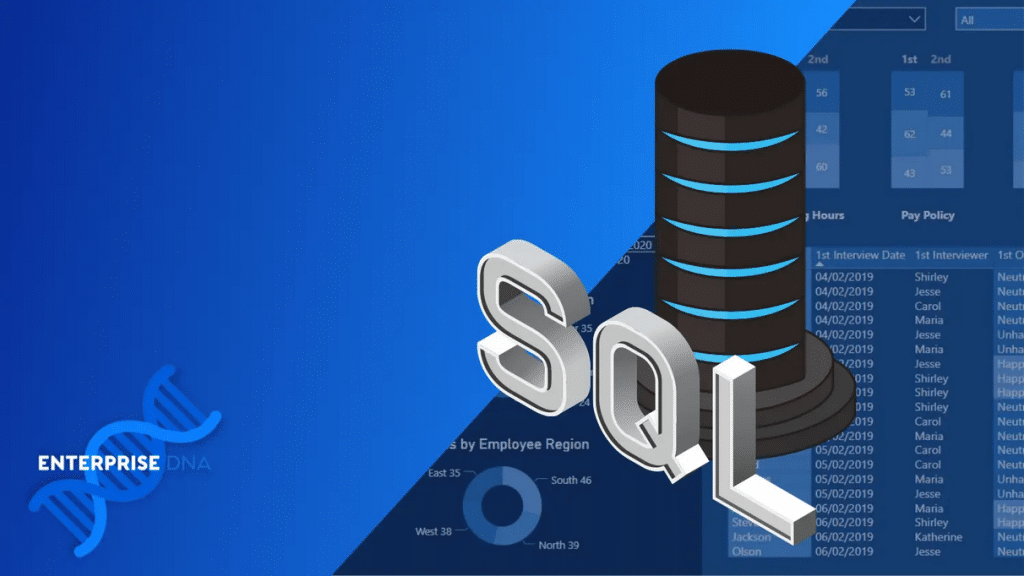
SQL is a domain-specific language designed to manage and manipulate relational databases. It allows you to create, update, delete, and retrieve data from database tables.
In this section, we’ll delve into the factors that can influence the time it takes to learn these concepts. While everyone’s journey will be unique, understanding these factors can help you better manage your expectations and tailor your learning experience to your needs.
From your programming background to the resources you choose, each aspect plays a crucial role in determining how quickly you can master SQL.
So, let’s examine each factor and learn how to make the most of your SQL education.
1. Prior programming experience
If you’re a data analyst, data scientist, web developer, or software engineer, or you’ve already dabbled in programming or worked with programming languages, you’re likely to have a head start in learning SQL.
An understanding of programming logic and concepts that are common in programming languages like Python or Javascript, such as variables, loops, and functions, can make grasping SQL easier.
However, if you’re new to programming and data analytics, don’t be discouraged – SQL is known for its relatively simple syntax and user-friendly nature, making it a great choice for beginners.
2. Personal learning pace
Everyone learns at their own pace, and it’s important to acknowledge and embrace your unique learning style. Some people may grasp new concepts quickly, while others may need more time and repetition to fully understand the material.
As you progress, adapt your learning strategies to your strengths and weaknesses, and remember that overcoming challenges and setbacks is a natural part of the learning process.
3. Quality of learning resources
The learning resources you choose can greatly affect your learning experience. Select materials that suit your learning style, whether that’s video tutorials, written guides, or interactive SQL courses.
Additionally, evaluate the credibility and effectiveness of the resources you use – high-quality materials can make complex topics more accessible and enjoyable. Don’t hesitate to leverage multiple sources for a well-rounded understanding of SQL concepts.
4. Time commitment and consistency
The amount of time you can dedicate to learning SQL will impact how quickly you’ll progress. If you’re able to study for several hours a day, you’ll likely become proficient faster than if you only have a few hours per week.
Regardless of your available time, establishing a regular study schedule and maintaining consistency is crucial. Remember, slow and steady progress is better than sporadic bursts of intense effort.
5. Hands-on practice
One of the most important aspects of learning SQL is applying the concepts you’ve learned through hands-on practice. Working with real-world scenarios and data sets not only helps solidify your understanding but also allows you to learn from mistakes and improve your problem-solving skills. The more you practice, the more confident and proficient you’ll become in using SQL.
Tips for creating an effective practice regimen:
- Set specific goals: Define what you want to achieve with your learning and set targets on a daily, weekly, or monthly basis.
- Allocating time: Dedicate a specific time of day to practicing SQL, ensuring consistency and focus. It could be as simple as one hour every morning before you start your day or one hour in the evening before you wind down for the day.
- Track your progress: Keep a record of your accomplishments and challenges to inform your future learning objectives. That should be easy if you use an online learning platform like Enterprise DNA, which automatically tracks your progress and awards learning achievements.
In the next section, we will give you rough estimates for how long it should take you to become proficient in SQL by breaking it down into three levels: beginner, intermediate, and advanced.
3 Stages of Learning SQL
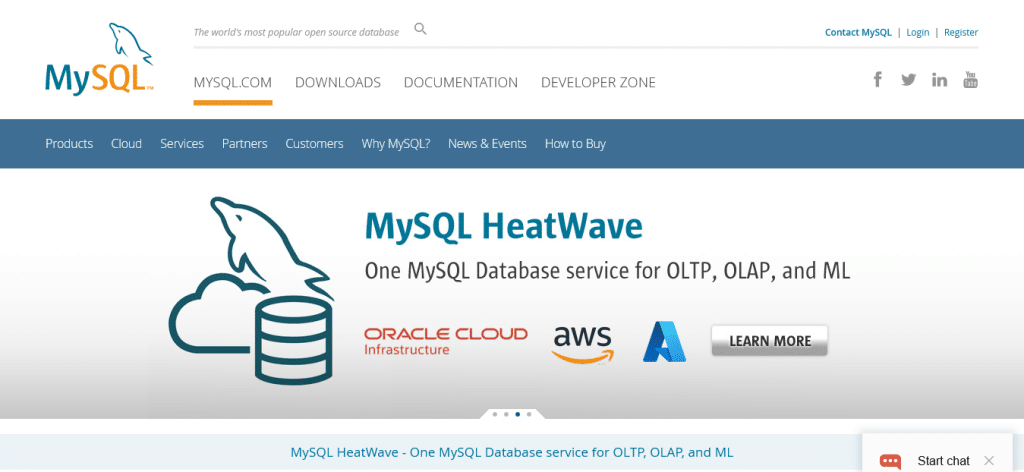
Embarking on the journey to become an SQL developer is both exciting and rewarding. As you progress through the various stages of learning SQL, from basic to advanced, you’ll uncover a wealth of knowledge and practical skills that will empower you to tackle increasingly complex data-related tasks.
This journey is typically divided into three distinct stages: basic, intermediate, and advanced, with each stage building upon the previous one with new concepts and techniques to help you become a more skilled and confident SQL programmer.
By understanding the key concepts and skills acquired at each stage, you can effectively plan your study sessions, set realistic expectations, and track your progress throughout your SQL learning adventure.
In this section, we’ll explore the estimated time frames to cross three levels of SQL proficiency and what you can expect to master at each stage.
1. Beginner Level: SQL Novice
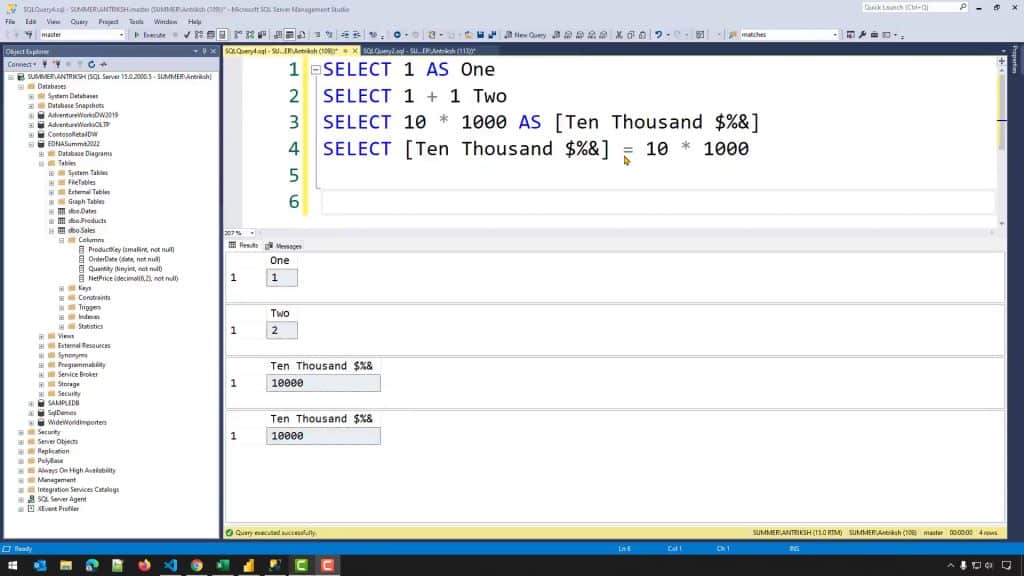
To cross the beginner level, you should have some knowledge of SQL fundamentals, such as standard language syntax, basic keywords, and simple queries using SELECT, WHERE, and ORDER BY clauses. With regular practice, you could complete the beginner level of SQL in 1 to 2 weeks.
Here’s a checklist of things you should know:
- Introduction to databases and SQL: Learn about the foundations of relational database management systems (RDBMS) and the role SQL plays in managing data within these systems.
- Essential SQL commands: Examples of some common commands include SELECT, FROM, WHERE, GROUP BY, HAVING, ORDER BY, and JOIN. These commands are crucial for writing queries and extracting relevant data from databases. Practice using each command in different scenarios to understand their nuances and capabilities.
- SELECT statement and basic queries: Learn to use the SELECT statement to retrieve data from one or more tables in a database, and understand how to craft simple queries to extract the information you need.
- Filtering data using WHERE and operators: Discover how to use the WHERE clause in conjunction with operators like =, <>, >, <, and others to filter data based on specific conditions.
- Sorting data with ORDER BY: Master the use of the ORDER BY clause to sort the results of your queries based on one or more columns, either in ascending or descending order.
- Table creation and modification: Creating and modifying tables in SQL requires the use of different commands, such as CREATE TABLE, ALTER TABLE, and DROP TABLE. It’s important to practice creating and modifying tables, as these skills are essential for organizing and managing database structures effectively. Check out this Enterprise DNA post to learn more.
- Database components: Understand the main components of a database, such as tables (which store data), rows (individual records), columns (data attributes), and keys (unique identifiers or relationships).
2. Intermediate Level: SQL Adept
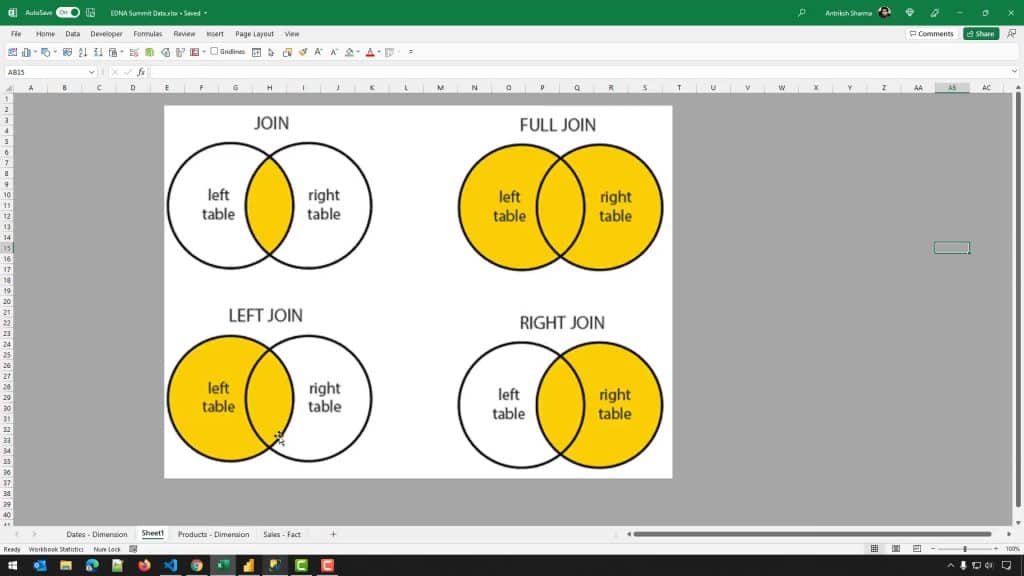
At the intermediate level, you should be able to write more complex SQL statements and queries, such as JOINs and subqueries, and understand how to manipulate data and work with functions and procedures.
With regular practice, you could complete the intermediate level of SQL in 3 to 6 weeks. This estimate assumes that you’ve already grasped the basics of SQL and are dedicating a consistent amount of time each day or week to learning and practicing.
Here’s a checklist of some concepts you should be familiar with to become an SQL adept:
- Introduction to indexing and performance optimization: Learn the basics of indexing in SQL, which can help improve query performance, and understand the importance of optimizing your SQL code.
- JOINs and their types (INNER, LEFT, RIGHT, FULL): Learn how to insert and combine data from multiple tables based on related columns using different types of JOINs, such as INNER, LEFT, RIGHT, and FULL.
- Subqueries and derived tables: Understand how to create and use subqueries and derived tables, which allow you to perform nested queries and add flexibility to your data retrieval process.
- GROUP BY and HAVING clauses: Explore the use of GROUP BY to group data based on specific attributes and the HAVING clause to filter grouped data based on conditions.
- Working with NULL values: Learn techniques to handle missing or unknown data represented by NULL values in SQL, such as using functions like COALESCE, NULLIF, and ISNULL.
- Advanced SQL functions and calculations: Delve into advanced SQL functions and calculations for tasks like date manipulation, string manipulation, and mathematical operations.
3. Advanced Level: SQL Master
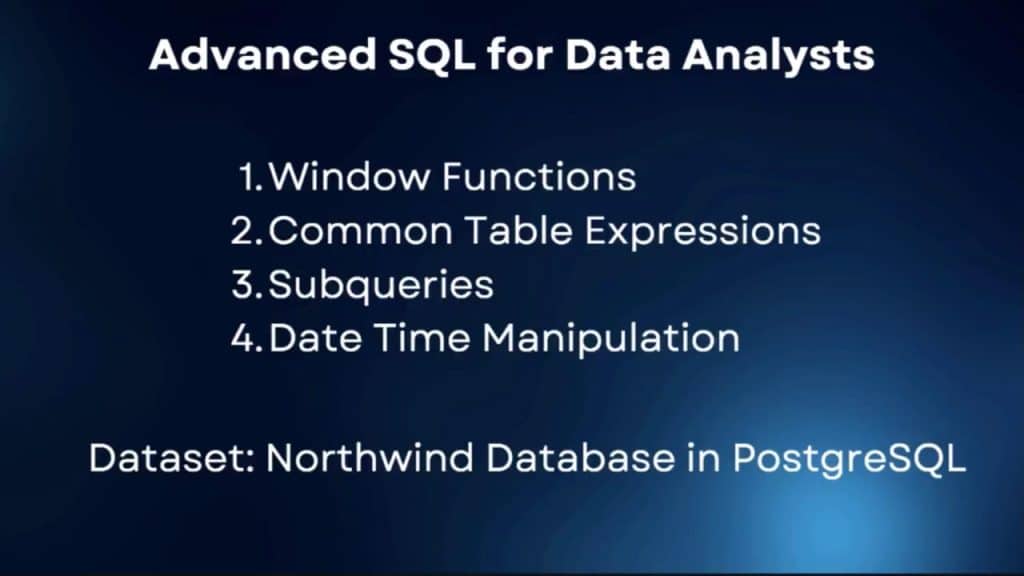
At the advanced level, you’ll tackle sophisticated concepts such as database design, stored procedures, and user-defined functions.
With a little persistence and a lot of practice, you could complete the advanced level of SQL in 4 to 8 weeks, assuming you are comfortable with the intermediate concepts and are ready to tackle more complex topics.
Here’s a checklist of advanced concepts you should master:
- Advanced database design and normalization: You should master advanced techniques for database design and normalization to maintain data integrity, reduce redundancy, and improve backend query efficiency.
- Stored procedures and user-defined functions: Learn how to create and use stored procedures and user-defined functions to encapsulate complex operations and reusable code segments.
- Triggers and event-driven programming: Discover how to use triggers and event-driven programming to automate actions within the database in response to specific events or changes in data.
- Transaction management and error handling: Understand the principles of transaction management to ensure safe and accurate execution of SQL operations, and learn to handle errors and exceptions that may occur during processing.
- Advanced indexing and query optimization: Explore advanced indexing techniques and additional query optimization strategies to further enhance the performance of your SQL code.
- Working with views and materialized views: Learn how to create and use views (virtual tables) and materialized views (stored query results) to simplify complex queries or improve query performance.
- Database security and user management: Understand best practices for securing your database (Microsoft SQL Server, PostgreSQL, MySQL, Oracle, etc.), managing user access, and maintaining data confidentiality and integrity.
- SQL for data warehousing and analysis: Learn how to use SQL in the context of data warehousing and analysis, enabling you to extract valuable insights and perform more complex data manipulations.
If everything we’ve covered in the checklists looks like gibberish to you, don’t panic! It’s perfectly normal for SQL to seem complicated when you have zero knowledge of the language.
Use the checklists as a rough guide and come back to them as often as you need to. You’ll slowly start to see your outlook on the topics covered change as you gain more SQL knowledge.
In the next section, we provide some general tips to help you succeed in your learning journey.
Tips for SQL Learning Success
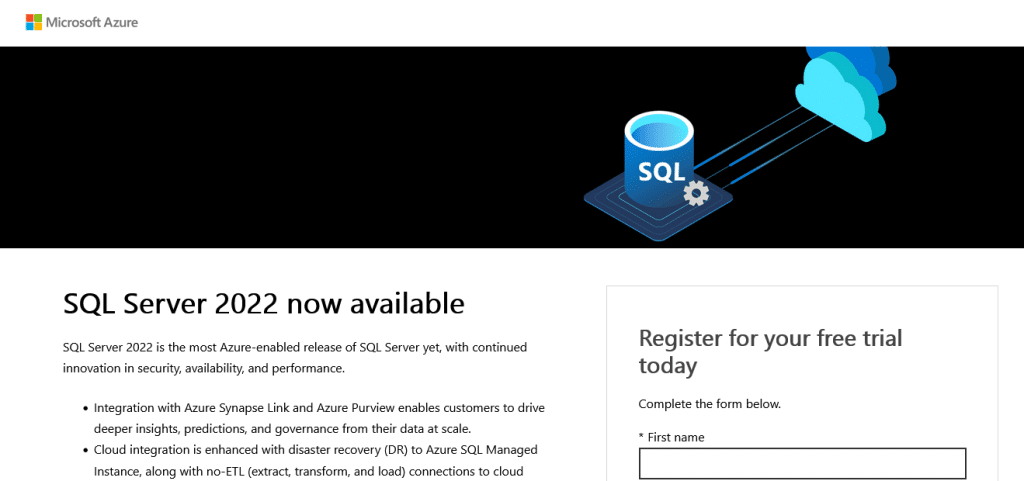
As with any new skill, mastering SQL will be difficult at first. To help you make the most of your learning journey, here are some helpful tips to ensure a successful experience:
- Set clear goals: Establish specific objectives to guide your learning process and allocate a realistic timeframe to achieve them. This will help you stay focused and motivated throughout your SQL studies.
- Choose the right resources: Select high-quality learning materials, such as SQL tutorials, online resources, bootcamps, books, or courses on Udemy, W3Schools, and Enterprise DNA, that cater to your learning style and cover the topics you need to master.
- Find a suitable learning platform: Select a platform or method that works best for your learning style. There are numerous resources available, such as online courses, books, and tutorials. Enterprise DNA has several courses that are worth checking out.
- Practice regularly: Dedicate consistent time to learning and practicing SQL. Regular practice helps reinforce your understanding of concepts and builds your skills more effectively.
- Track your progress: Make use of the checklists we provided to monitor your achievements and setbacks and adjust your learning plan accordingly. Use spreadsheets if you must. This will help you identify areas that need improvement and celebrate your successes.
- Break tasks into manageable segments: When working on complex queries or projects, break the task down into smaller, more manageable pieces. This will make the problem-solving process more efficient and prevent you from becoming overwhelmed.
- Connect with the community: Join forums, social media groups, and Reddit communities, or attend local meetups to engage with other SQL learners and professionals. Sharing experiences and seeking advice from peers can accelerate your learning progress.
- Learn from real-world examples: Examining existing SQL databases and observing how others have structured their queries can provide a wealth of knowledge and inspiration.
- Challenge yourself: Once you’ve mastered the basics, continue to expand your skill set by taking on more advanced SQL topics and projects. Pushing yourself out of your comfort zone will accelerate your learning progress.
With these actionable tips in your arsenal, you’ll be well on your way to SQL learning success. Stay committed, patient, and persistent, and you’ll soon find yourself tackling even the most complex SQL challenges with ease and confidence. Happy coding!
The Bottom Line – SQL is Not Hard to Learn
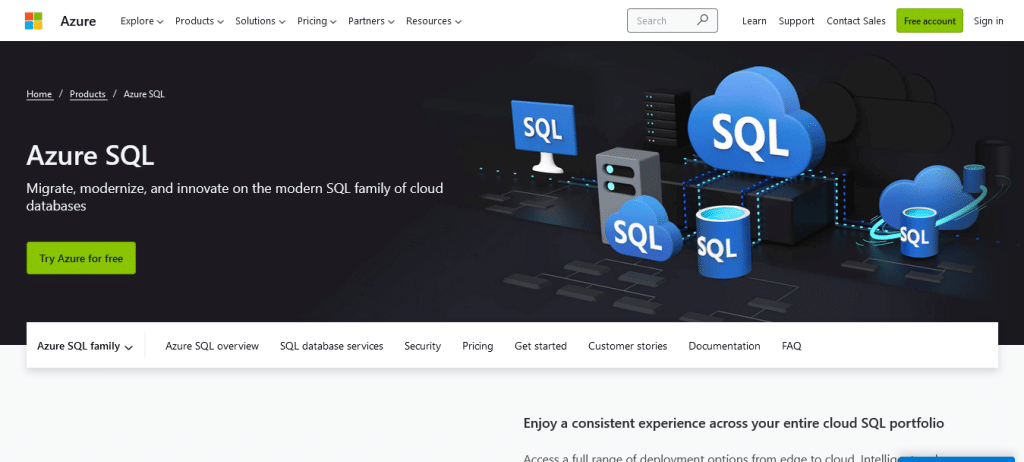
Learning SQL is a valuable skill for anyone interested in data management, data science, data analysis, or working with databases.
The time it takes to learn SQL varies depending on your background in software development, career path, learning pace, and the amount of time you invest in studying and practicing.
With a clear learning plan and consistent practice, you can expect to grasp basic SQL concepts in 1 to 2 weeks, reach an intermediate level in 3 to 6 weeks, and tackle advanced topics in 4 to 8 weeks or more.
Remember, the key to mastering SQL lies in setting realistic goals, choosing the right resources, and maintaining a strong commitment to learning.
By following these guidelines in this article and embracing the tips for SQL learning success, you’ll be well-equipped to navigate the fascinating world of SQL and harness its full potential in no time!
Finally, make sure to apply the concepts you’re learning to real-world tasks, experiment with different queries, and solve problems you encounter. This will help solidify your understanding and increase your confidence as you continue to grow and develop your SQL skills.
To learn more about how to use SQL and its integration with Microsoft applications, check out the video below:








